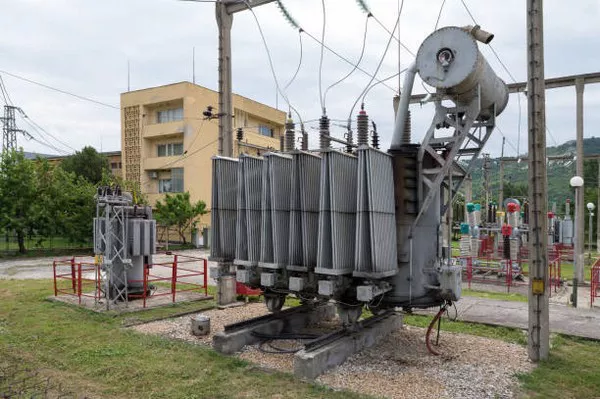Transformers play a crucial role in electrical systems by converting voltage levels to accommodate various devices and appliances. Among the various types of transformers available, Class 2 transformers hold a unique position, known for their specific applications and adherence to stringent safety standards. In this article, we will explore what a Class 2 transformer is, its applications, and the importance of adhering to safety regulations.
Defining Class 2 Transformers
Class 2 transformers are a distinct category of transformers designed to meet specific safety standards outlined by the National Electric Code (NEC) in the United States. The NEC defines Class 2 circuits as low-voltage, low-energy systems that limit the power to a safe threshold. Class 2 transformers are built with these limitations in mind, ensuring that the output voltage and power levels are safe for use with various electrical devices.
Applications of Class 2 Transformers
Class 2 transformers find applications in a wide range of industries and scenarios, primarily due to their safety features and ability to provide low-voltage power. Here are some common applications:
Lighting Systems: Class 2 transformers are often used to power low-voltage lighting systems, including landscape lighting, decorative lighting, and architectural lighting. They offer a safe and efficient way to illuminate outdoor spaces and enhance aesthetics.
HVAC Systems: Heating, Ventilation, and Air Conditioning (HVAC) systems may use Class 2 transformers to power control circuits, thermostats, and damper actuators. These transformers ensure that the control components operate at safe voltage levels.
Doorbell Systems: Doorbell transformers are typically Class 2 transformers. They provide the necessary power for doorbell chimes, intercom systems, and access control devices, ensuring that these systems pose no electrical hazards.
Security Systems: Security cameras, motion detectors, and access control systems often rely on Class 2 transformers for power. The low-voltage output of these transformers is safer for both installers and end-users.
Automated Controls: Class 2 transformers are essential components in automation and control systems. These systems are widely used in manufacturing, industrial processes, and building management to regulate machinery and equipment.
Medical Equipment: In the medical field, Class 2 transformers are used to power various diagnostic and therapeutic devices, such as medical imaging equipment, patient monitors, and infusion pumps. Safety is paramount in healthcare settings, making Class 2 transformers a preferred choice.
Safety Regulations and Standards
Class 2 transformers are defined and regulated by specific safety standards to ensure their safe operation. These regulations are critical in preventing electrical hazards, fires, and damage to equipment. Here are some key safety standards governing Class 2 transformers:
UL 5085-3: Underwriters Laboratories (UL) Standard 5085-3 specifically covers Class 2 transformers. This standard outlines safety requirements and performance criteria for transformers intended to be used in Class 2 circuits.
NEC Article 725: The National Electric Code (NEC) provides guidelines and regulations for Class 2 and Class 3 circuits. Article 725 of the NEC details the requirements for power sources and wiring methods used in these circuits.
IEC 61558-2-6: For international standards, the IEC 61558-2-6 standard specifies safety requirements for transformers used in Class 2 circuits. It provides a global framework for the design and testing of such transformers.
Key Features of Class 2 Transformers
Class 2 transformers are designed with specific features to meet safety standards and ensure their proper functioning. Some key features include:
Limited Output: Class 2 transformers are designed to deliver a limited amount of power, typically defined in volt-amperes (VA) or watts. This limitation ensures that even in the event of a short circuit or overload, the power output remains within safe levels.
Overcurrent Protection: These transformers often include overcurrent protection devices, such as fuses or circuit breakers, to prevent excessive current flow in case of a fault. This added layer of safety minimizes the risk of fire or equipment damage.
Isolation: Class 2 transformers are often isolated transformers, which means they provide electrical isolation between the primary and secondary windings. This isolation helps prevent electrical interference and enhances safety.
Compact Design: They are typically compact and lightweight, making them suitable for a wide range of applications where space may be limited.
Efficiency: Class 2 transformers are designed for efficiency, ensuring that minimal power is wasted as heat during operation.
Benefits of Using Class 2 Transformers
Choosing Class 2 transformers for appropriate applications offers several advantages:
Enhanced Safety: The primary benefit of Class 2 transformers is enhanced safety. They are engineered to minimize electrical hazards, making them ideal for applications where people or sensitive equipment may be in close proximity.
Compliance: Using Class 2 transformers ensures compliance with safety standards and regulations, reducing the risk of non-compliance penalties and legal issues.
Equipment Protection: These transformers protect connected equipment and devices by limiting voltage and power levels. This safeguard prevents equipment damage due to electrical surges or faults.
Reliability: Class 2 transformers are known for their reliability and longevity, reducing the need for frequent maintenance or replacements.
Conclusion
Class 2 transformers play a crucial role in providing low-voltage, low-energy power for a wide range of applications. Their adherence to stringent safety standards, such as UL 5085-3 and NEC Article 725, ensures that electrical systems are safe, compliant, and reliable. When selecting transformers for specific applications, considering safety and compliance is paramount to prevent electrical hazards and maintain the integrity of connected equipment and devices.

